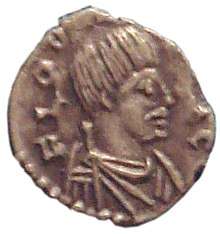Scirii

The Scirii (also Sciri, Scirians, Skirii, Skiri or Skirians) were an East Germanic tribe[1] of Eastern Europe, attested in historical works between the 2nd century BC and 5th century AD.
Etymology
The etymology of their name is unclear. A possible derivation based on Germanic yields clean- or pure-bloods as opposed to the neighbouring tribe of Bastarnae, or mixed-bloods.[2]
History
The Scirii are believed to have first lived near the territory of the Aesti, south of the Baltic Sea (currently northern Poland). They are known as the "Scirri" in the writings of Pliny the Elder. Plinius stated that the territory extending from the Vistula river, as far as Eningia (probably he meant Feningia = Finland), was inhabited by the following nations: the Venedi (centuries later referred to as Wends), the Scirri and the Hirri.[3] They migrated southwards apparently around 200 BC (some secondary works give a more precise date of 230 BC), along with the Bastarnae. The Protogenes Inscription (3rd century BC) mention the Sciri,[4][5] when they tried unsuccessfully to capture the Greek city of Olbia, northwest of the Black Sea. After a peace treaty with the Roman Empire they are recorded as living east of the Bastarnae, near the Black Sea.
For the next six centuries historical references to the Scirii are sporadic, but sufficient to suggest continuity.
In the 4th century AD, some of the Scirii lived in the Carpathians, where they were defeated by the Huns. During the height of the Hunnic empire under the Huns' leader Attila, the Scirians allied themselves with Attila and provided potent infantry for him. As the Hunnic empire disintegrated, the Scri primarily allied themselves with the Suevi.
In 468/469 the Tisa Sciri made a surprise attack on Valamir, the Ostrogothic king, killing him. The battle of Bolia followed pitting the Ostrogoths against a confederation of tribes not the least of which were the Suevi and the Sciri. Despite the absence of Valamir, it was a victory for his people,[6] and a severe loss for the Sciri, one from which they never recovered.[7] After this battle, the Scirii variously joined with both Visigoths and the Ostrogoths, while others may have ended up foederati in the Roman empire.[7]
According to Jordanes, about 476 CE the first king of Italy Odoacer, a Torcilingi, possibly related to the Sciri, led the remains of the anti-Ostragoth confederation into Italy, including among them some of the Sciri, the Heruli, and the Rugians.[8] But the Sciri no longer appear as a separate people.[7]
See also
Notes and references
Additional source: Nationalencyklopedin article on Skirer (Scirians).
- ↑ Ó hÓgáin, Dáithí (2002). The Celts: A History. Boydell Press. ISBN 978-0-85115-923-2.
- ↑ Hepp, Armin E. (1986). Völker und Stämme in Deutschland: von der Steinzeit zum Mittelalter (in German). Herrsching, Bavaria, Germany: Manfred Pawlak Verlag. p. 268. ISBN 978-3-88199-293-0. originally published by Grabert in 1979 as Licht von Mitternacht: Auf den Spuren deutscher Vergangenheit.
- ↑ "Nec minor opinione Eningia. Quidam haec habitari ad Vistulam a Sarmatis, Venedis, Sciris, Hirris, tradunt". Plinius, IV. 27.
- ↑ Studies in the History and Language of the Sarmatians - J. Harmatta
- ↑ M. M. Austin, The Hellenistic World from Alexander to the Roman Conquest : A Selection of Ancient Sources in Translation, Cambridge University Press, 2006, p. 220.
- ↑ Wolfram, Herwig (1990). "The Ostrogothic Kingdom in Pannonia". History of the Goths. Berkeley, California: University of California Press. p. 264–265. ISBN 978-0-520-06983-1.
- 1 2 3 Reynolds, Robert L.; Lopez, Robert S. (1946). "Odoacer: German or Hun?". The American Historical Review. 52 (1): 36–53. doi:10.2307/1845067. JSTOR 1845067.
- ↑ Jordanes, Getica 242